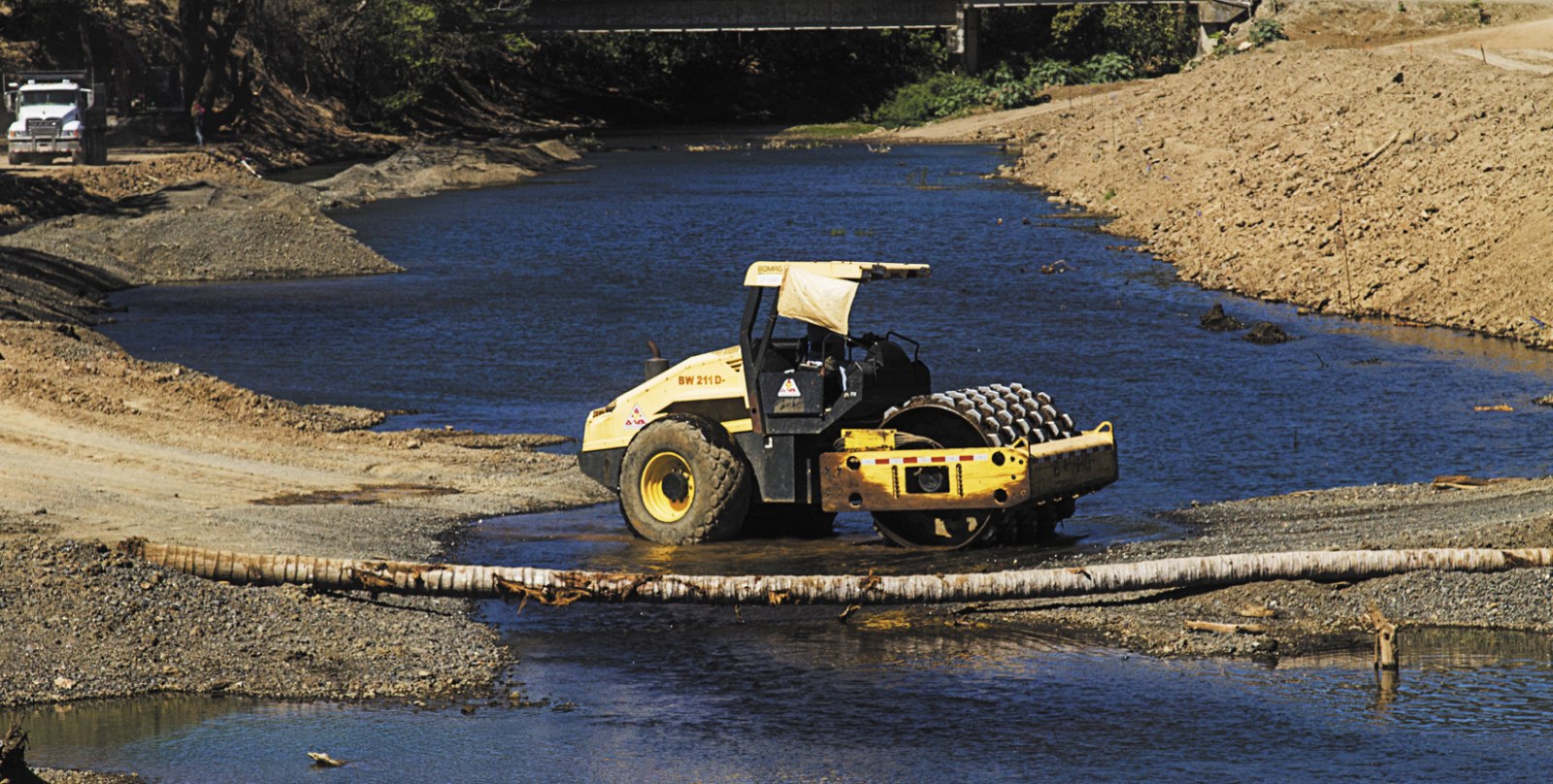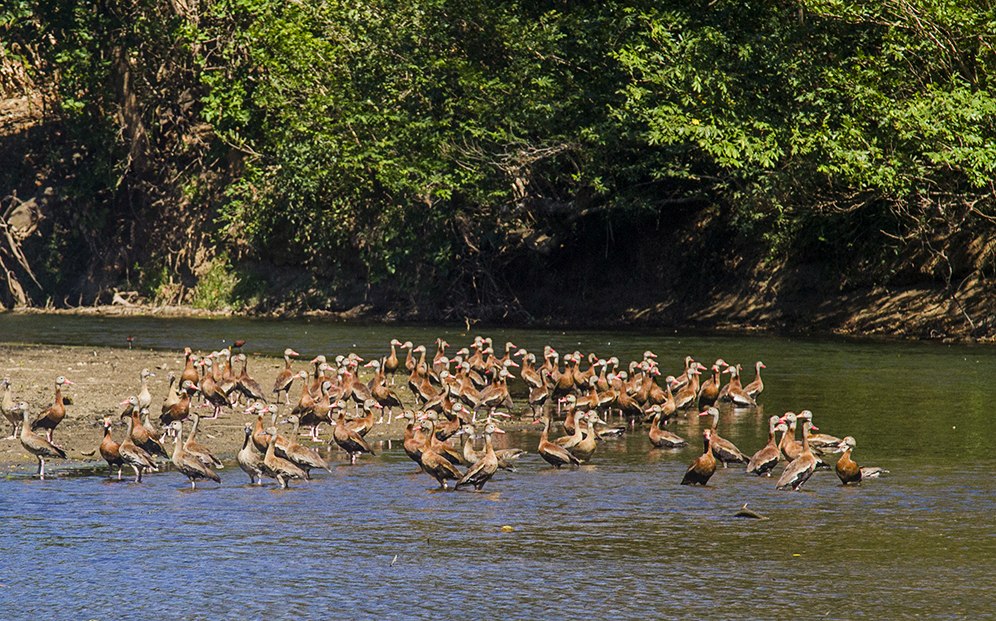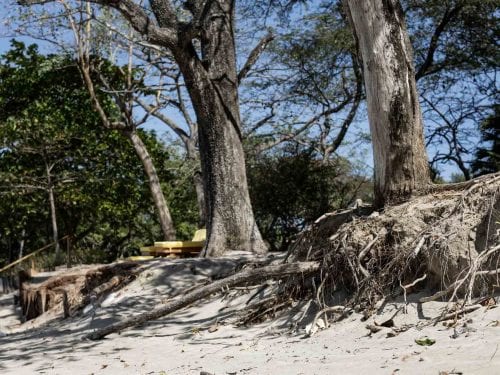
When a national emergency is decreed in which the lives of people who live in an area are at risk, conducting an environmental study is not an indispensable requirement. This is the situation with the dredging work done on the Nosara River.
This was confirmed by the press department of the National Emergency Commission (CNE- Comision Nacional de Emergencias).
The CNE declared a state of emergency in 2012 as a result of Tropical Storm Thomas, which hit the country in the winter of 2010, causing an unusual increase in the flow and flooding of the Nosara River, which represented a threat to people who live near the river.
Reynaldo Carballo, an official from the CNE press office, indicated that in cases when an emergency is declared, the presentation of environmental impact studies is not necessary.
“According to the National Emergencies and Risk Prevention Law, the institution (CNE) applies the exception protocol to perform protection work under an emergency decree…. so that the government can get enough financial, material or other resources quickly to take care of the people, goods and services at risk or affected,” he explained.
In addition, Carballo indicated that to carry out dredging work, it was coordinated with both government environmental agencies.
“(CNE) has been working in a coordinated and articulated way with SENARA, the unit implementing the project, to inform and seek the approval of the Ministry of Environment, Energy and Seas (MINAE) and SINAC in the work done during the Nosara River dredging. Both institutions already performed the respective inspections,” he assured.
Mangrove and Health of River Affected Most
Nevertheless, although the work is in line with current legislation, Mauricio Mendez, marine biologist and assistant director of the Tempisque Conservation Area (ACT- Area de Conservacion Tempisque), indicated that the impact to the environment is inevitable and it will take several months to recover its previous state.
Such is the case of the mangrove trees located on the banks of the river that are vital to the conservation of ecosystems, which have been removed and could cause a drop in the reproduction of shrimp and fish.
“Some micro habitats are formed by the roots of mangrove trees and the pools in the river. Rivers have microenvironments, shrimp, small fish and species such as sea bass that come out of the sea and into the mangrove to spawn,” Mendez explained.
Other species affected are birds like the kingfisher, which perch on the branches of the trees surrounding the river. In addition, felling trees prevents species like monkeys from crossing over the shore.
Additionally, Mendez estimated that the river will inevitably suffer from some sort of hydrocarbon pollution due to the machinery operating in the riverbed.
Another important point made by the biologist is the effect on the health of the river due to gravel, the material that is being applied as a filler to form the dike.
“This material (the gravel) can accumulate on the remaining mangrove roots and can limit the exchange of air and flow of water in the mud that makes up the substratum of the mangrove. This can cause the mangrove to dry up,” Mendez commented.
Additionally, sedimentation and pieces of gravel can accumulate in the mouth of the river, which could alter the physical structure of the beach and even affect turtles laying their eggs.
“It could impact the turtles because they are used to digging in the sand, not in gravel,” Mendez stated.
Regarding the reforestation plan of Senara and the Nosara Development Association (ADIN), Mendez stressed that it is important after completion of the work, but he believes it will be a slow recovery.
“The river is going to recover, but it will take a long time. The CNE should allocate funds to mitigate the environmental impact on the mangroves and the beaches that are important nesting sites,” he added
Dike with Hydrogeological Calculations
On a tour made by The Voice of Guanacaste of the houses near the river, we met Randall Matarrita, who lives just 100 meters from the river and expressed concern that even the dike yields due to the strong currents and flooding of the river during rainy season.
“This [work] does not work because you can see that the river water will jump over the dike. Where are the water outlets?” asked Matarrita.
Pablo Zamora Morales, Senara engineer, said they have all of the hydrogeological and design calculations and that the most critical points in the topography of the river are already marked.
Regarding sedimentation, Zamora assured that rivers always carry sediment so CNE should consider maintaining the river to extend the life of the dike and reduce the impact to the environment.
Note: Senara and CNE will have an informational meeting about the Nosara river dike at the Santa Marta Community Hall. The meeting in Thursday, March 12 at 6 pm.







Comments